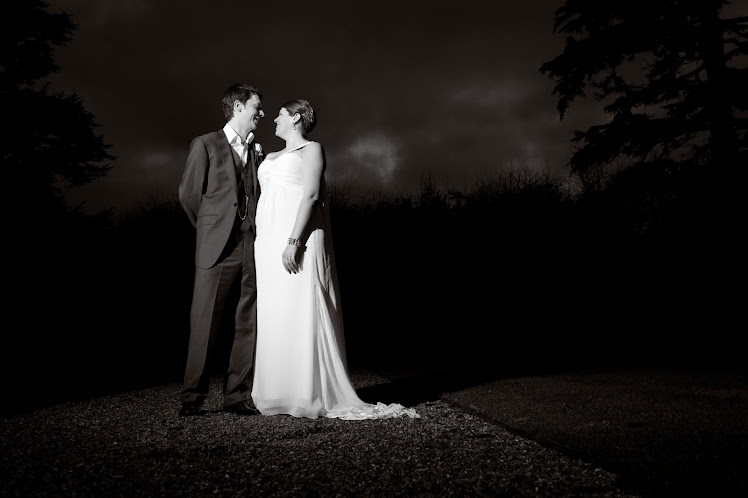So, I've decided that a geeky camera blog post is way overdue.
Did you know that there are mobile phones available now that have a higher megapixel count than my main camera, which I use to photograph my clients' weddings? Crazy, hey?
Most normal people (that is, not a geeky camera nerd) are under the impression that more megapixels = better camera, so therefore any 16 mp camera is better than any 8mp camera. Well, this is only partly true. Megapixels do matter, but only to a point. A 1mp camera phone picture nearly always looks rubbish, but does that mean everyone interested in photography needs upwards of 15mp just to get a decent image? The short answer is absolutely not.
My Nikon D700 cost £1,750 (without any lenses) and yet has 'only' 12.1 megapixels, which was actually a downgrade of my previous camera, the 12.2 mp Canon 450D. So why did I bother blowing all that money for something worse than what I had before? The answer is that not all megapixels are created equal. Unlike all but professional DSLR cameras the Nikon D700 features a full frame sensor, which is about double the size of the sensor in most other DSLRs (and many many times larger than the sensor in a smartphone's camera). What this means is that the manufacturer can either pack more photo sites onto the sensor, like the 24.5 mp Nikon D3X, or it can make fewer, but larger photosites. Larger photosites, to cut a long and boring story short, vastly reduce the noise to signal ratio, making clean and beautiful image files in extremely dark conditions (such as in a church) without the need to blast everything with flash. My Canon 450D hit its limit at ISO 1600, and looked absolutely awful at that setting. (ISO is the sensitivity of the sensor - the higher the number, the more sensitive the sensor is, meaning the ability to achieve sharp pictures in low light without the need for flash or long shutter speeds, and with it motion blur). If absolutely necessary, my D700 can be pushed all the way up to ISO 25,000 plus. Admittedly, at this extreme the image quality does suffer, but what it meant in practice was that at a recent wedding I was able to get some shots of the bride dancing with her father in almost pitch black conditions without flash and with almost no motion blur - to use flash would have killed the mood in the picture stone dead.
Anyway, did you know that digital camera bodies these days are only part of the story, and that photographers in the know would much prefer to invest in great lenses, as those are what truly makes the difference in image quality that you see in their pictures. Also, most of the best lenses out there are called prime lenses, which means they don't zoom at all - if you want to get closer you have to move with your legs. The simpler design of these lenses means fewer compromises and almost always a fast maximum aperture (the ability to let in more light per click of the shutter) of f2.8, f1.4, or even f1.2 in some cases.
These professional lenses are really really good, but unfortunately they have price tags to go with it. All of the lenses I want at the moment are over £1,000 each at the moment, used. Here's what I've got in my bag at the moment and how I use them as tools in my photography.
Nikon 28mm f2.8D - this wide angle prime lens helps me get large group shots at weddings, captures great landscapes and enables me to take pictures of a bride getting ready in extremely cramped rooms.
Nikon 50mm f1.4G - a standard prime lens, this is neither wide angle nor telephoto, meaning it roughly sees what I see. The image quality is amazing and the mega-fast maximum aperture means I can shoot in the lowest levels of light and also blur out a background completely.
Nikon 70-200mm f2.8G - this is a professional grade telephoto zoom lens that is renowned for its ability to make amazing portraits. In a wedding I can stand at a distance and record details, emotions, etc, without interfering in the scene. By the way, a tip is never to use a wide angle lens to take a close-up portrait as it will distort the subject's features.
Nikon 105mm f2.8 Micro - This is a new addition to my collection (it's being delivered in the next day or two). A macro lens is a lens that allows the photographer to get ultra close to the subject, making it ideal for taking photos of insects. Wedding photographers use a macro lens to get great, detailed photos of things like rings, which are too small to be photographed well with other lenses without the help of a closeup filter.
Anyway, I'm sure I'll indulge in another geek-out session very soon.
Bye!
P.s. If you have any questions about photography I'd be delighted to help in any way I can.
- Posted using BlogPress
